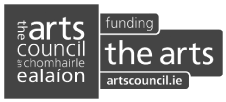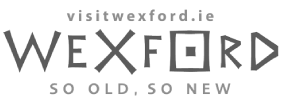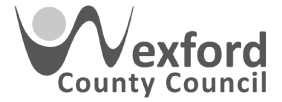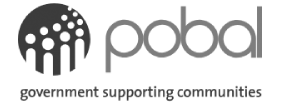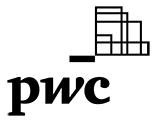And Creatures Dream…A New Language
A two-venue show at Wexford County Council and Wexford Arts Centre
3rd July – 25th August 2017
Exhibition Reception:
Saturday 1st July at 1.30pm at Wexford County Council, Carricklawn
Followed by a talk at 3.15pm in Wexford Arts Centre, Cornmarket
Guest Speaker: Ruairí O Cuív, Public Arts Manager – Dublin City Council
All welcome, refreshments and brunch served.
The Arts Department of Wexford County Council in partnership with Wexford Arts Centre are delighted to present And Creatures Dream…A New Language, a group exhibition which reveals in part how the visual arts are represented in County Wexford, with focus in this exhibition, on painting. The selected artists involved actively engage with the language of paint, wholeheartedly referencing its distinguished history, while making adventurous forays beyond.
The artists included in the exhibition are Robert Armstrong, Ciaran Bowen, John Busher, Eamonn Carter, Serena Caulfield, Helen Gaynor, Aileen Murphy, Kate Murphy, Rosie O’Gorman, Emma Roche, Breda Stacey, George Warren and Michael Warren.

And Creatures Dream…A New Language taken from Susan Stewart’s poem, A Language, explores the relationship of perception to conscious being, to knowing, and to human and aesthetic encounters. Much of the work hints at the instability of perception, which relies on memory – itself an unsafe faculty – and the fragility of the edifice of knowledge.
‘There was a myth
I once knew about twins who spoke
a private language, though one
spoke only the truth and the other
only lies. The savior gets mixed
up with the traitor, but the traitor
stays as true to himself as a god.
All night the rain falls here, falls there,
and the creatures dream, or drown, in the lair.
Susan Stewart, extract from A Language
The exhibition title references both dreams and language – opposing aspects of the human condition, dreams referring to the unknown, buried, even random parts of the self, and language, a more formal, structured, conscious communication system – the former the source of everything that grows in a body of work, the latter the means by which the expression of it can be found. What is intriguing of course, is how we translate what lies in the unconscious through language, and that there can be limits a particular language can place on that expression, and the question of can the language of words adequately relate all we know. And can the language of paint redress the shortfall?
The works draw widely from the inherited rich history of painting, yet still, as individuals, the artists engage and push the boundaries of what painting might be. They address the strengths, vulnerabilities, and challenges of the process, yet still indulge in landscape, myth, and allegory, and a constancy of intriguing stories, made all the more intriguing by seeming to be ‘half-told’. Busher’s paintings for example, in their distinct layers, show the influence of his print practice, each fragment telling part of the story of specific moments, but always only part. With their strong sense of the provisional, the next layer of meaning is introduced, and the last abandoned, and changes in perception accommodated.
Armstrong, Busher, Carter, Gaynor and O’Gorman, all allude to traditions that include figurative, landscape, still life, allegorical and narrative painting. In Armstrong’s work, there is an inescapable association with the allure of early painting, including sixteenth century Italian. However, where the latter are peopled with figures and Christian saints, Armstrong’s are marked by the absence of such, with frequent abstract shapes in lieu. The sculptural work of Michael Warren also draws inspiration directly from Italian painting of the sixteenth century, as do some of the works of Eamonn Carter.
Rawness in handling of medium, and a broadening of what the medium of paint might include, is also an aspect of the exhibition. Substances not traditionally seen as paint (a definition might read: coloured substance spread over a surface and dried to leave a thin decorative or protective coating) are re-defined, as is the idea of a painting (work produced through the art of painting, traditionally rectilinear). There is little attempt at hiding the means by which the work is created. The substance drips, is moulded, manipulated, and splashed, and with the sometimes accidental nature of its physical presence, meaning is suggested, not dictated.
Eliminating the canvas and allowing the paint to become surface and medium is an aspect of the work of artists Bowen, Roche and Kate Murphy. Roche attempts to physically address the ‘problem’ of painting – by dealing with its very anatomy – what it’s made of and how it is made. Her works focus on leftovers – the spilled paint or failed or destroyed surfaces – which she re-works into sculptures or paintings. She acknowledges an interest in ‘unlearning’ and ‘relearning’ established processes, and in hybrid forms, obsessed as she is with ‘thingness’.
Murphy’s current pieces sit somewhere between paintings, dioramas and assemblages. They are made using random storage/gift boxes, found paintings and other supports, together with very heavily worked oil paint and other brightly coloured items. The pop colours and frivolous objects, contrasted with the barren, de-populated landscapes, convey a darkly humorous overtone.
In his work, Bowen uses unstable non-traditional materials – silicone, glue and ester foam among others – pushing them through a process of tentative restraints to establish forms and structures, thereby creating individual methods of applying paint onto the surface of each, and again challenging the concept of a four-cornered canvas. By expansion beyond the flat surface – like Roche’s, George Warren’s and Murphy’s works – Bowen’s fall between the gap of painting and sculpture. The original surface becomes clogged and obstructed by the many layers of silicone applied separately to it, and it interacts with the surrounding space and with other pieces within the gallery space, in vibrant manifestations.
Wexford County Council and Wexford Arts Centre would like to thank the Kevin Kavanagh Gallery for the loan of selected works for the exhibition.
Images (left to right):
John Busher, Cardigan (Stripes), 2017, oil on canvas, 55 x 50cms
Robert Armstrong, A Cloud for Sigiriya II, 2016, oil on linen, 70 x 90cm
Rosie O’Gorman, Still, Sort of Fortunately, 2013, 162cm x 149, oil on canvas
As Creatures Dream…A New Language will run in Wexford County Buildings and Wexford Arts Centre until Friday 25th August 2017. Opening hours are Monday to Friday from 9am-5pm in Wexford County Council and Wexford Arts Centre, and from 10am-4pm on Saturdays in Wexford Arts Centre.
For further information on the exhibition please contact Catherine Bowe, Visual Arts Manager, Wexford Arts Centre, Cornmarket, Wexford on +353 (0)53 91 23764 or emaiL catherine@wexfordartscentre.ie. Alternatively, contact Lisa Fortune, Staff Officer, The Arts Department, Wexford County Council, Carricklawn, Wexford on +353 (0)053 9196500 or email lisa.fortune@wexfordcoco.ie.



